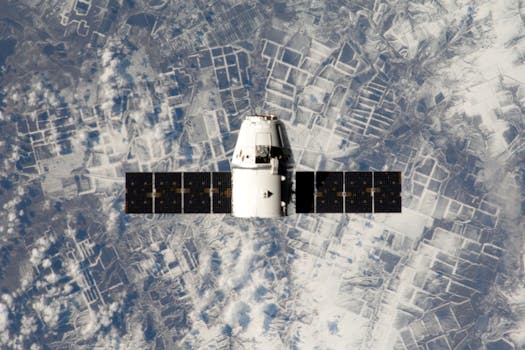The Future of Satellites: Revolutionizing Global Connectivity
The future of satellites is poised to revolutionize global connectivity, enabling faster and more reliable communication services. With advancements in technology, satellites are becoming increasingly important for a wide range of applications, from telecommunications to navigation and Earth observation.

The Future of Satellites: Revolutionizing Global Connectivity
The future of satellites is poised to revolutionize global connectivity, enabling faster and more reliable communication services. With advancements in technology, satellites are becoming increasingly important for a wide range of applications, from telecommunications to navigation and Earth observation. In this article, we will explore the current state of satellite technology and the exciting developments that are shaping the future of this industry.
One of the most significant trends in the satellite industry is the proliferation of small satellites, also known as smallsats. These satellites are significantly smaller and less expensive than traditional satellites, making them more accessible to a wider range of companies and organizations. Smallsats are being used for a variety of applications, including Earth observation, communications, and scientific research. Companies such as Planet Labs and DigitalGlobe are using smallsats to provide high-resolution images of the Earth, while others, such as OneWeb and SpaceX, are launching constellations of smallsats to provide global internet connectivity.
Advancements in Satellite Technology
Advances in satellite technology are driving the growth of the industry. One of the most significant advancements is the development of reusable launch vehicles, which are capable of launching satellites into space and then returning to Earth, reducing the cost of access to space. Companies such as SpaceX and Blue Origin are leading the charge in this area, with their reusable launch vehicles, such as the Falcon 9 and New Glenn, respectively.
Another area of advancement is in the development of more efficient and powerful satellite propulsion systems. Traditional satellite propulsion systems are often heavy and inefficient, which can limit the lifespan of a satellite. New propulsion systems, such as electric propulsion and advanced ion engines, are being developed to provide more efficient and longer-lasting propulsion for satellites.
Applications of Satellites
Satellites have a wide range of applications, from telecommunications to navigation and Earth observation. One of the most significant applications of satellites is in the provision of global internet connectivity. Companies such as OneWeb and SpaceX are launching constellations of smallsats to provide fast and reliable internet connectivity to remote and underserved communities around the world.
Satellites are also being used for navigation and mapping. The Global Positioning System (GPS) is a network of satellites that provides location information to GPS receivers on the ground. This system is widely used for navigation, mapping, and other applications. Other satellite navigation systems, such as the European Union’s Galileo system and China’s BeiDou system, are also being developed to provide similar services.
Challenges and Opportunities
Despite the many advancements and applications of satellites, there are also challenges and opportunities that must be addressed. One of the most significant challenges is the issue of space debris, which is the accumulation of discarded satellites and other objects in Earth’s orbit. This debris can pose a significant hazard to operational satellites and other spacecraft, and it must be addressed through the development of more sustainable and responsible practices in the satellite industry.
Another challenge is the issue of regulatory frameworks, which are often unclear or inconsistent across different countries and regions. This can create uncertainty and obstacles for companies and organizations that are seeking to develop and launch satellites. Efforts to establish clearer and more consistent regulatory frameworks are underway, but more work is needed to address these challenges.
In conclusion, the future of satellites is bright and exciting, with many developments and applications that are shaping the industry. From the proliferation of small satellites to advancements in satellite technology and applications, the satellite industry is poised to play an increasingly important role in global connectivity and other areas. Addressing the challenges and opportunities in the industry will be crucial to realizing the full potential of satellites and ensuring a sustainable and responsible future for the industry.